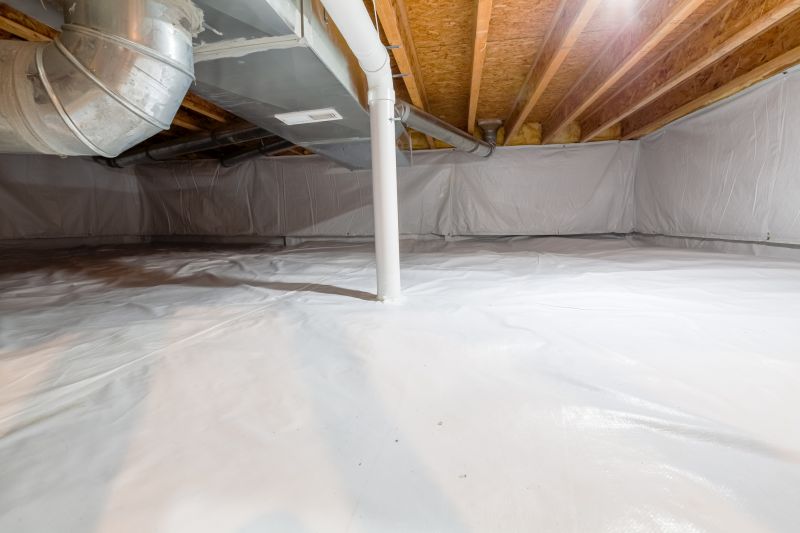Affordable Crawlspace Encapsulation to Safeguard Your Property
Crawlspace encapsulation offers a comprehensive solution to protect homes from moisture, mold, and structural damage. Proper encapsulation involves sealing the crawlspace with a vapor barrier and insulation, creating a controlled environment that enhances indoor air quality and prevents costly repairs.
Encapsulation reduces excess moisture in the crawlspace, preventing mold growth and wood rot which can compromise structural integrity.
Sealing the crawlspace minimizes the infiltration of mold spores, dust, and allergens into the living areas, promoting healthier indoor air.
A sealed crawlspace helps maintain consistent temperatures, reducing energy bills and improving HVAC performance.
By controlling moisture levels, encapsulation protects foundation supports and prevents wood decay, extending the lifespan of the home.

A fully encapsulated crawlspace with durable vapor barriers and insulation, showcasing a clean and sealed environment.

Close-up of the vapor barrier installed on the crawlspace floor, preventing moisture intrusion.

Insulation and sealing applied to crawlspace walls for comprehensive moisture and temperature control.

Covers over vents to prevent outside air and moisture from entering the crawlspace, maintaining a controlled environment.
Neglecting crawlspace encapsulation can lead to serious issues such as mold proliferation, wood rot, increased energy costs, and potential structural damage. Studies show that homes with unsealed crawlspaces can experience up to a 15% increase in energy bills due to air leaks and temperature fluctuations. Additionally, moisture-related problems can cause significant health concerns, including respiratory issues from mold spores and dust mites.
| Risks of Not Encapsulating | Potential Consequences |
|---|---|
| Mold Growth | Can lead to respiratory problems and structural decay. |
| Wood Rot | Weakens foundation supports and increases repair costs. |
| Higher Energy Bills | Loss of conditioned air results in increased heating and cooling expenses. |
| Unpleasant Odors | Damp environments foster musty smells. |
| Pest Infestations | Moisture attracts termites and other pests. |
| Structural Damage | Long-term moisture exposure can compromise the foundation. |
| Decreased Indoor Air Quality | Increased allergens and mold spores. |
| Potential Health Risks | Respiratory issues and allergies. |

